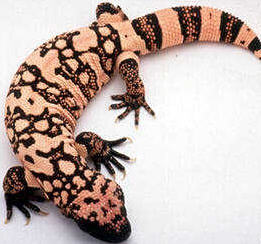
Ember
Our Akita Puppy, Age 8 Weeks
This newsletter keeps you up-to-date with new articles, Web pages, and books that I have written about diabetes.
- I list and link most of these on my at Diabetes Directory and in the site’s menu.
From time to time Diabetes Update may also include links to other Web pages of special interest.
My recent contributions are:
- ExtendBars and the Dawn Phenomenon
It’s pretty clear that ExtendBars can help control nighttime hypos. But the manufacturer is also claiming — on the basis of one small, short study — that they can also reduce the dawn phenomenon by 28 percent. The dawn phenomenon is something that concerns me and many of my readers. So when the ExtendBar company president sent me a dozen of his new low-carb bars, I was delighted to put them to the test. But I was not so delighted with the results. The URL is ExtendBars and the Dawn Phenomenon. - Tracking the GlucoLeader
One of the new meters from HMD BioMedical in Titusville, Florida, does something that you can’t do with any other meter on the market right now. It automatically uploads your readings to family or health care professionals — all without using a computer. The URL is GlucoLeader.
Update:

A Gila Monster
Take a Shot of This
- The Food and Drug Administration last Thursday approved the Gila monster drug, the first of a new class of drugs called incretin mimetic agents that help regulate blood glucose in a way similar to that of glucagon-like peptide (GLP)-1. It now has a trade name Byetta, pronounced bye-A-tuh.
The drug’s manufacturer, Amylin Pharmaceuticals in San Diego, and marketer, Eli Lilly in Indianapolis, say that it will be available in drugstores by June 1.
Byetta stimulates insulin secretion only when blood glucose is high. It also restores first-phase insulin response, an activity of the insulin-producing cells in the pancreas that is lost in those of us who have type 2 diabetes. The result is typically a 1 percent reduction in A1C and some weight loss. Most of the people in clinical studies also lost weight.
The downside is that you currently have to take two shots of Byetta a day to get these results. Amylin, however, is working on long-acting release formulations.
You also can’t yet take it without other drugs like metformin. But Amylin is working on more studies so we can use Byetta alone.
One of the reasons why some people lost weight when taking Byetta might have been that it caused mild-to-moderate nausea among at least half of the people in the clinical trials. However, the nausea decreased after a while.
Byetta is the synthetic version of a peptide, or small protein, found in the venom of the Gila monster, a poisonous lizard of the Southwest and Mexico. More than three years ago Dr. John Eng told me the dramatic story of how he discovered that the venom of the Gila monster was similar to glucagon-like peptide 1, an incretin hormone produced in the human digestive tract. That article is online at http://www.mendosa.com/monster.htm.
The company’s URL for Byetta is http://www.byetta.com/. Full prescribing information is online at http://pi.lilly.com/us/byetta-pi.pdf.
Alternative Medicine:
- Salacia Reticulata
Last month it was Salacia Oblonga that some of you subscribers asked me about. This month the hot new alternative medicine to help control blood glucose is Salacia reticulata.
There is very little published research on Salacia reticulata, which is also known as Kothala Himbutu tea. MEDLINE (the database of all peer-reviewed medical literature) has 15 studies, of which 6 mention diabetes and of which only one is a human study (the others are of rats and test tube).
The single human study appeared this February in the Journal of Ethnopharmacology (pages 215-8). PubMed has the abstract at http://www.ncbi.nlm.nih.gov/entrez/query.fcgi?cmd=Retrieve&db=pubmed&dopt=Abstract&list_uids=15707755. “A double blind randomized placebo controlled cross over study of a herbal preparation containing Salacia reticulata in the treatment of type 2 diabetes” comes to us from M.H. Jayawardena and his or her associates at Sri Lanka’s University of Sri Jayawardanapura.
They know what we want to hear — double-blind, randomized, and placebo-control are the keys. And they say that the tea reduced the mean A1C level of the test subjects from 6.65 percent to 6.29 percent. But I wouldn’t stake my life on a single three-month study of 51 people with type 2 diabetes.
I don't trust the results for several reasons. Dr. Steven Bratman says it best in his review of double-blind studies at http://www.mendosa.com/bratman.htm:
To make matters even more difficult, double-blind studies are not all created alike. There are a number of pitfalls in designing, performing, and reporting such studies, and for this reason some double-blind studies deserve more credence than others. Double-blind studies from certain countries, such as China and Russia, always must be taken with a grain of salt, because historical evidence suggests a pattern of systematic bias in those countries. Studies that enroll few people, or last for only a short time, generally prove little. And unless more than one independent laboratories have found corroborating results, there’s always the chance of bias or outright fraud. Thus, a treatment can only be considered proven effective when there have been several double-blind studies enrolling 200 or more people, performed by separate researchers, conducted according to the highest standards (as measured by a study rating scale called the ìJadad scaleî), carried out at a respected institution and published in a peer-reviewed journal. Weaker evidence provides, at best, a hint of effectiveness, very likely to be disproved when better studies are done. - Caiapo (Ipomoea Batatas)
Another subscriber brought yet another alternative to my attention this month. This one is called caiapo (Ipomoea batatas). Caiapo is a white-skinned sweet potato. The report by European doctors appeared in Diabetes Care and is online at http://care.diabetesjournals.org/cgi/content/full/25/1/239.
This too is a double blind randomized placebo study. Likewise, it is a small (just 18 test subjects) short (6 week) study. The researchers say that in their pilot study test subject reduced fasting blood glucose and total as well as LDL cholesterol. Blood glucose levels dropped from 8.8 mmol/l to 8.4 mmol/l among those on a low dose and from 8.3 mmol/l to 7.2 mmol/l among those on a high dose.
A correspondent brought another study to my attention after this issue of the newsletter went out. This study is also placebo-controlled, randomized, and double-blinded. In this study more subjects (61) were tested for a longer time (12 weeks). After treatment with Caiapo, A1C levels dropped from 7.21 to 6.68 percent. That’s good, and they call it significant, but most people consider a drop of 1 percent to be significant. The entire article is online at http://care.diabetesjournals.org/cgi/content/full/27/2/436
Interesting, but I guess that I stick with my yellow sweet potatoes. We don’t have too many white-skinned sweet potatoes here in the Rockies anyway.
New Products:
- GoLower Carb Counter Nut Bars
You are in luck this time if you live in the U.K. because GoLower Ltd. is a company in Edinburgh, Scotland. It makes its GoLower nut bars in three flavors, raspberry, coconut, and chocolate. GoLower’s Kevin Dorren kindly sent me a case of each.
The first ingredient in each is oligofructose syrup, which isn’t well known, but should be. Oligofructose is a probiotic, those substances that promote the growth or activity of the good bacterial species known as probiotics.
The main selling proposition of the GoLower nut bars is that they are low carb. That’s fine, but doesn’t interest me as much as the claim that they are low glycemic. They are also high in fiber — 9 or 10 grams per bar. Fiber is good, but if you are able to get a hold of these fine nut bars, don’t eat more than one at a time or be prepared to suffer the usual consequences.
The website, http://www.golower.co.uk/nut_bar.html. tells you more about them. Katherine Prouty has a most positive review in her “Low Carb Freedom” blog at http://www.lowcarbfreedom.com/2005/03/my_favorite_bar.html.
- Lärabars
Humm Foods Inc. in Denver, if anything, makes you humm more with its even more natural Lärabars. They are a delicious blend of unsweetened fruits, nuts, and spices. These bars are raw foods and each flavor contains a minimum of ingredients — no more than two to six per bar. None of them have any added sweeteners. All of them are gluten-free, dairy-free, vegan, and kosher.
I have found them in seven flavors, of which five are listed on the company’s website: apple pie, banana cookie, cashew cookie, cherry pie, and chocolate coconut chew. I found two others at Wild Oats that are apparently too new to be listed online: cocoa molé and ginger snaps.
Only available for a couple of years now, you can buy these delicious and healthful bars in many stores, including Wild Oats and Whole Foods, as well as online.
The company’s URL is about as well done as any I have seen. Check it out at http://www.larabar.com.
This month I am delighted to have discovered two great nut bars. They are great because they not only taste good, they are good. Each is natural and doesn’t use any artificial sweeteners.
But you can’t have both. At this time, one brand is sold only in Europe, and the other in North America.
Announcements:
- HTML Format
I send out Diabetes Update e-mail in HTML format, which all Web browsers and most modern e-mail programs can display. HTML has live links to all the sites named in the text so that with a simple click of a mouse you can connect to the site you have just been reading about.
- My Guarantee
This newsletter:- Is and will remain free.
- Nor will I ever sell, rent, or trade your e-mail address to anyone.
- I will link sources of information.
- I will disclose any conflict of interest.
- If and when I learn of any errors of fact, I will correct them.
Archives:
I now send out Diabetes Update once a month. Previous issues are online:
- Diabetes Update Number 1: Diabetes Genes of December 10, 2000
- Diabetes Update Number 2: DiabetesWATCH of December 18, 2000
- Diabetes Update Number 3: Starlix of January 3, 2001
- Diabetes Update Number 4: Native Seeds/SEARCH, Tepary Beans of January 17, 2001
- Diabetes Update Number 5: Insulin Makes You Fat of January 31, 2001
- Diabetes Update Number 6: Available and Unavailable Carbohydrates of February 15, 2001
- Diabetes Update Number 7: Dates of March 1, 2001
- Diabetes Update Number 8: Quackwatch of March 15, 2001
- Diabetes Update Number 9: The Cost of Insulin of March 30, 2001
- Diabetes Update Number 10: Sof-Tact Meter of April 2, 2001
- Diabetes Update Number 11: iControlDiabetes of April 16, 2001
- Diabetes Update Number 12: Cinnamon, Tagatose of May 2, 2001
- Diabetes Update Number 13: Glycemic Index of May 15, 2001
- Diabetes Update Number 14: Eat Your Carrots! of May 31, 2001
- Diabetes Update Number 15: Glycemic Load of June 21, 2001
- Diabetes Update Number 16: Homocysteine of July 2, 2001
- Diabetes Update Number 17: Chana Dal Tips of July 15, 2001
- Diabetes Update Number 18: Lag Time in AlternativeLand of August 2, 2001
- Diabetes Update Number 19: Fiber of August 15, 2001
- Diabetes Update Number 20: How Diabetes Works of August 30, 2001
- Diabetes Update Number 21: Insulin Resistance of September 14, 2001
- Diabetes Update Number 22: Trans Fats, Honey, CU of October 1, 2001
- Diabetes Update Number 23: Pedometer Power of October 15, 2001
- Diabetes Update Number 24: Is Glycerin a Carbohydrate? of October 31, 2001
- Diabetes Update Number 25: Kill the Meter to Save It of November 15, 2001
- Diabetes Update Number 26: Protein, Fat, and the GI of December 1, 2001
- Diabetes Update Number 27: Insulin Index of December 14, 2001
- Diabetes Update Number 28: Fructose of January 4, 2002
- Diabetes Update Number 29: Aspirin of January 14, 2002
- Diabetes Update Number 30: Stevia of January 31, 2002
- Diabetes Update Number 31: Gretchen Becker’s Book of February 19, 2002
- Diabetes Update Number 32: The UKPDS of March 4, 2002
- Diabetes Update Number 33: Financial Aid of March 18, 2002
- Diabetes Update Number 34: Pre-Diabetes of April 1, 2002
- Diabetes Update Number 35: More Glycemic Indexes of April 15, 2002
- Diabetes Update Number 36: Gila Monsters of April 30, 2002
- Diabetes Update Number 37: Is INGAP a Cure? of May 15, 2002
- Diabetes Update Number 38: Native American Diabetes of June 3, 2002
- Diabetes Update Number 39: FDA Diabetes of June 19, 2002
- Diabetes Update Number 40: Diabetes Support Groups of July 1, 2002
- Diabetes Update Number 41: New GI and GL Table of July 15, 2002
- Diabetes Update Number 42: Diabetes Sight of August 1, 2002
- Diabetes Update Number 43: DrugDigest of August 18, 2002
- Diabetes Update Number 44: Hanuman Garden of September 3, 2002
- Diabetes Update Number 45: Guidelines of September 16, 2002
- Diabetes Update Number 46: Trans Fat of October 4, 2002
- Diabetes Update Number 47: Nutrition.Gov of October 16, 2002
- Diabetes Update Number 48: Our Hearts of October 31, 2002
- Diabetes Update Number 49: Our Kidneys of November 15, 2002
- Diabetes Update Number 50: A1C<7 of December 2, 2002
- Diabetes Update Number 51: Diabetes Searches with Google of December 16, 2002
- Diabetes Update Number 52: e-Patients of January 2, 2003
- Diabetes Update Number 53: Email News of January 16, 2003
- Diabetes Update Number 54: Third Generation Meters of January 31, 2003
- Diabetes Update Number 55: Hypoglycemic Supplies of February 14, 2003
- Diabetes Update Number 56: Food Police of March 1, 2003
- Diabetes Update Number 57: Vitamins of April 1, 2003
- Diabetes Update Number 58: Lancets of May 1, 2003
- Diabetes Update Number 59: Accurate Meters of June 1, 2003
- Diabetes Update Number 60: Chromium of July 1, 2003
- Diabetes Update Number 61: Traveling of August 1, 2003
- Diabetes Update Number 62: My Book of September 1, 2003
- Diabetes Update Number 63: Hot Tubs of October 1, 2003
- Diabetes Update Number 64: Home A1C Testing of November 1, 2003
- Diabetes Update Number 65: Detemir of December 1, 2003
- Diabetes Update Number 66: Erectile Dysfunction of January 1, 2004
- Diabetes Update Number 67: Acidic Foods of February 1, 2004
- Diabetes Update Number 68: Net Carbs of March 1, 2004
- Diabetes Update Number 69: Glycemic Index of April 1, 2004
- Diabetes Update Number 70: Dreamfields Pasta of May 1, 2004
- Diabetes Update Number 71: Cholesterol of June 1, 2004
- Diabetes Update Number 72: Meter News of July 1, 2004
- Diabetes Update Number 73: Pill Splitting of August 1, 2004
- Diabetes Update Number 74: GlucoMON of September 1, 2004
- Diabetes Update Number 75: Coding of October 1, 2004
- Diabetes Update Number 76: Sleep Apnea of November 1, 2004
- Diabetes Update Number 77: Keynote Address of December 1, 2004
- Diabetes Update Number 78: Mangosteen of January 1, 2005
- Diabetes Update Number 79: Noninvasive Dream of February 1, 2005
- Diabetes Update Number 80: Pelikan Sun of March 1, 2005
- Diabetes Update Number 81: Medtronic Monitors of April 1, 2005



